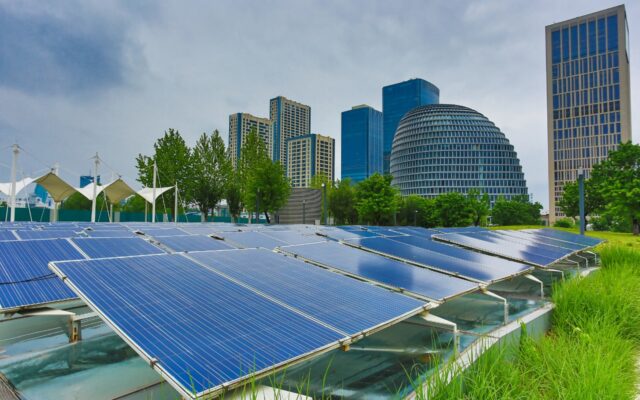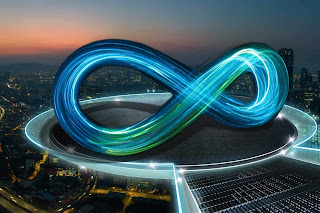Sustainability discussions have been front and center for government and industry leaders worldwide. There has been much talk about reducing e-waste and the impact it has on the environment. Globally, the world generated 53.6 million metric tons of e-waste in 2019 and that number is expected to grow to 74.7 million metric tons by 2030. This is fueled by the growing market for all kinds of electronics with limited participation in formal recycling and reuse programs. In simple terms, the world is still too focused on consuming and throwing away.
Read More: DES-5221: Dell EMC Data Center Networking Specialist Exam for Implementation Engineer
The embracing of sustainable practices in IT among businesses has been slow. Most do not have an environmentally sustainable process in place for disposing of IT equipment. Greater importance must be placed on making a difference and changing the trajectory. Opportunities continue to exist to become more efficient at managing IT infrastructure lifecycle and e-waste management.
In many locations around the world, policies and regulatory requirements govern how end users are supposed to dispose of their equipment in order to help keep this equipment out of landfills when the electronics reach end of life. The question is, how can a customer address this e-waste issue while fulfilling business and operational goals? The circular economy is one of the key initiatives of sustainability to drive change.
As part of sustainability initiatives, IT leadership will need to consider the impact of e-waste arising from their infrastructure environment going forward. It’s not just a trend but a necessity.
Circular Economy
A circular economy gives us the tool to tackle resource use, climate change and biodiversity loss while addressing important social needs by repairing, refurbishing, reintroducing, remanufacturing or recycling products, keeping them in the economy. The goal is to have very little to no waste. Traditional economic approach is linear, beginning from natural resource to final product and ultimately disposal. Extending the life of electronic products and re-using components benefits the economy by generating less CO2 emission compared to mining for raw materials or manufacturing. Functioning equipment is valued more than the materials they contain. E-waste no longer becomes a waste or pollutant when it is put back into the economy in a useful format.
Commitment to Sustainability
Dell Technologies has a longstanding commitment to sustainability. We have a corporate goal that, by 2030, for every product a customer receives, we will reuse or recycle an equivalent product. We have an additional goal to make more than half of our product content and all of our packaging from recycled or renewable materials, thus helping close the loop. In conjunction with our other Progress Made Real goals, we are trying to drive sustainability and accelerate the adoption of a circular economy. Circularity is a key component of our design standards and we can see Circularity at work throughout Dell’s product lifecycle.
Technology Rotation
How can you advance sustainability and participate in the circular economy? Technology Rotation* integrates payment solutions into the procurement strategy, contributing towards the U.N.’s Sustainable Development Goals (SDGs), lowering total cost of ownership, and creating a positive impact on the environment.**
Technology Rotation optimizes the technology lifecycle by rotating in the latest products at a pre-defined cycle without continuing to incur cost for technology that is no longer operating at its peak performance. Technology Rotation contributes to the Circular Economy by refurbishing and remarketing 95% of assets. The recirculated equipment is therefore put back in to productive use. The remaining 5% are recycled in adherence with local regulatory guidelines such as EPA in the United States, WEEE in Europe, and NCTRS in Australia.Increases in business flexibility of Technology Rotation allows companies the ability to innovate and meet challenges from new initiatives. Acquisition of technology is simplified. The findings from IDC Survey demonstrates that it can lower your Total Cost of Usage (TCU) by up to 33%. Technology Rotation improves operational efficiency. Systems and applications running on the latest technology achieve higher performance with less resource consumption. And of course, at the end of the cycle, we take that equipment back for reuse or recycling.
Sustainability Partnership
Dell Technologies can partner with you to meet your sustainability goals in reducing e-waste with Technology Rotation. The benefits are optimized performance, getting the latest equipment technology and moving the responsibility of handling e-waste to us. Together we can build a better world and a sustainable future.
*All websites referenced in this article are intended for readers located in the United States only. Readers outside of the United States may access their county’s website by selecting their location from the location menu. Products and offers may not be available or may vary by country.
**Payment solutions provided and serviced by Dell Financial Services L.L.C. or its affiliate or designee (“DFS”) for qualified customers. Offers may not be available or may vary in certain countries. Where available offers may be changed without notice and are subject to product availability, applicable law, credit approval, documentation provided by and acceptable to DFS and may be subject to minimum transaction size. Offers not available for personal, family or household use. Dell Technologies and the Dell EMC logo are trademarks of Dell Inc. Restrictions and additional requirements may apply to transactions with governmental or public entities. FAIR MARKET VALUE (“FMV”) LEASE: At the end of the initial FMV Lease term, lessee may 1) purchase the equipment for the then FMV, 2) renew the lease or 3) return the equipment to DFS
Source: delltechnologies.com






0 comments:
Post a Comment